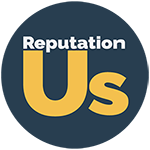“Public relations” dates back to the Revolutionary War, with strategies and tactics used to bolster patriot involvement in the Boston Tea Party. President Thomas Jefferson first used the term in an 1807 speech to Congress, replacing the phrase “state of thought” with “public relations.”
The tools of the trade—from community and media relations, to public and government affairs—have evolved in complexity since the days of the tricorn hats. But the core of a successful public relations program remains simply, “repulations.” Yes, it’s a new term we created to uniquely describe the public relations industry that combines reputation management and public relations together.
At ReputationUs, we’ve decided to adopt this tongue-tripping term as an essential element to relationship enhancement and reputation management. Here’s why “repulations” is our new mantra: Your reputation and relationships work together in a new public relations paradigm to support and enhance each other.
Power of the People
In the digital age, relationships require constant engagement. The more engaged a company is on the Internet, the easier it is to manage an online reputation. This is essential in a world with almost three billion people active on social media channels. What would have previously been a closed conversation, can now be posted for the world to see with a tap of the screen. Your “relationships” can be laid bare in an instant, with a single consumer complaint threatening the core of your company or nonprofit’s reputation.
Your reputation is one of your organization’s most important assets. Reputation management starts internally first by listening and knowing what your board, executives, staff and customers feel about your culture, products and systems. Being a good manager of your reputation also requires generating online content, responding to internal and external commentary and utilizing search engine optimization (SEO) techniques.
But in addition to simply understanding what is being said (or not being said) about you, your company and your competition, if you find damaging insights inside your company (e.g., Net Performer Score, Glassdoor), or detrimental content online, you must act swiftly to prevent vulnerabilities from turning into a reputation crisis.
Building a Bridge Through Relationships
Today, a solid reputation is built through meaningful conversations and relationships with your customers. This process takes time, but not a lot of money. Consider these three audiences in building repulations as you effectively navigate through the digital age:
- Internal audience. What are your staff, board and executives saying about you internally? Take negative feedback to heart and make changes before people share widely or put it online.
- External audience. Are you doing enough to harness and understand the voice of your customers? Be sure to collect feedback and make improvements. By establishing an environment where your customers have a voice, you reduce the chance of negative feedback being shared in places you cannot moderate.
- Influencers: How can you partner with the influencers who are part of your industry? Establish relationships with people whose values and standards mirror those of your brand, and truly listen to what they have to say.
While good old-fashioned PR was once an effective way to tell your story, now repulations is essential and it comes down to listening and managing perceptions. The relationships you have with your board, employees, community and customers you serve, and even your competitors are the means for achieving your goals. You can translate the wisdom you learn into enhancing your products, process and people.








